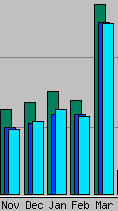Lake Tahoe, CA…Since the 2007 Angora Fire, the Tahoe Fire and Fuels Team (TFFT) has completed 65,000 acres of treatment to reduce hazardous fuels in the Tahoe Basin. These restoration projects improve the vitality of the basin’s forests to withstand the increasing threats of drought and other extreme weather events. With the Caldor Fire nearby, we want to share what you can do individually to complement the work that the TFFT is doing to prepare for wildfire.
Monitor Incident Information – Stay up to date on the current acreage and containment statistics by visiting the incident page here and sign up to receive CAL FIRE updates here. For current evacuation locations, check the El Dorado County Sherriff Evacuation Map. For the latest Caldor Incident information, attend a live CAL FIRE AEU community meeting daily at 5PM at www.facebook.com/CALFIREAEU.
Highway 50 is closed in both directions from Pollock Pines (Sly Park Road exit) to Meyers. Check the CAL FIRE incident page and the Caltrans QuickMap for road closure updates.
Sign Up for Emergency Alerts –You should take initiative by signing up for emergency alerts. Placer Alert, El Dorado County Code Red, Douglas County Code Red, and Washoe County Code Red allow individuals to register up to five addresses for notifications. Those who often travel around Lake Tahoe should sign up for all four counties.
Prepare an Evacuation Go-Bag – Prepare a Go-Bag in advance, and include 3-5 days of supplies you would need to self-sustain should you be ordered to evacuate. Include essentials such as clothes, toiletries, prescriptions, food, water, cash and pet supplies. Make sure your personal documents (such as social security card, passport, and memorabilia) are accessible. Consider adding a USB drive with copies of these documents to your Go-Bag.
Plan for a Potential Evacuation – Evacuating can be stressful and scary, so you should have a plan. Familiarize yourself with your neighborhood, identify potential escape routes, and build relationships with your neighbors, especially if you do not have a car. Learn how to turn off the gas and electricity at your home, designate a family meeting point, and identify an out-of-town contact. Prepare to address the special needs of vulnerable family members and neighbors, including the elderly and those with medical problems or disabilities. In the event that you have to evacuate, use this Wildfire Evacuation Checklist for guidance. Practice the plan with your family, pets and neighbors. Muscle memory will help in times of real emergency.
Do a Home inventory – If, and only if, you have time, consider documenting your important items in the event you need to file an insurance claim. Document your home inventory here or use the home inventory app here. Take photos and/or videos of your most important items.
Visit TahoeLivingWithFire.com and follow @tahoelwf on Facebook, Instagram, and Twitter for more wildfire preparedness and prevention information.
####



